Traditional search tracking is built on a simple promise: type a query, get a result, and track your ranking. AI doesn’t work that way.
Assistants like ChatGPT, Gemini, and Perplexity don’t show fixed results—they generate answers that vary with every run, every model, and every user.
“AI rank tracking” is a misnomer—you can’t track AI like you do traditional search.
But that doesn’t mean you shouldn’t track it at all.
You just need to adjust the questions you’re asking, and the way you measure your brand’s visibility.
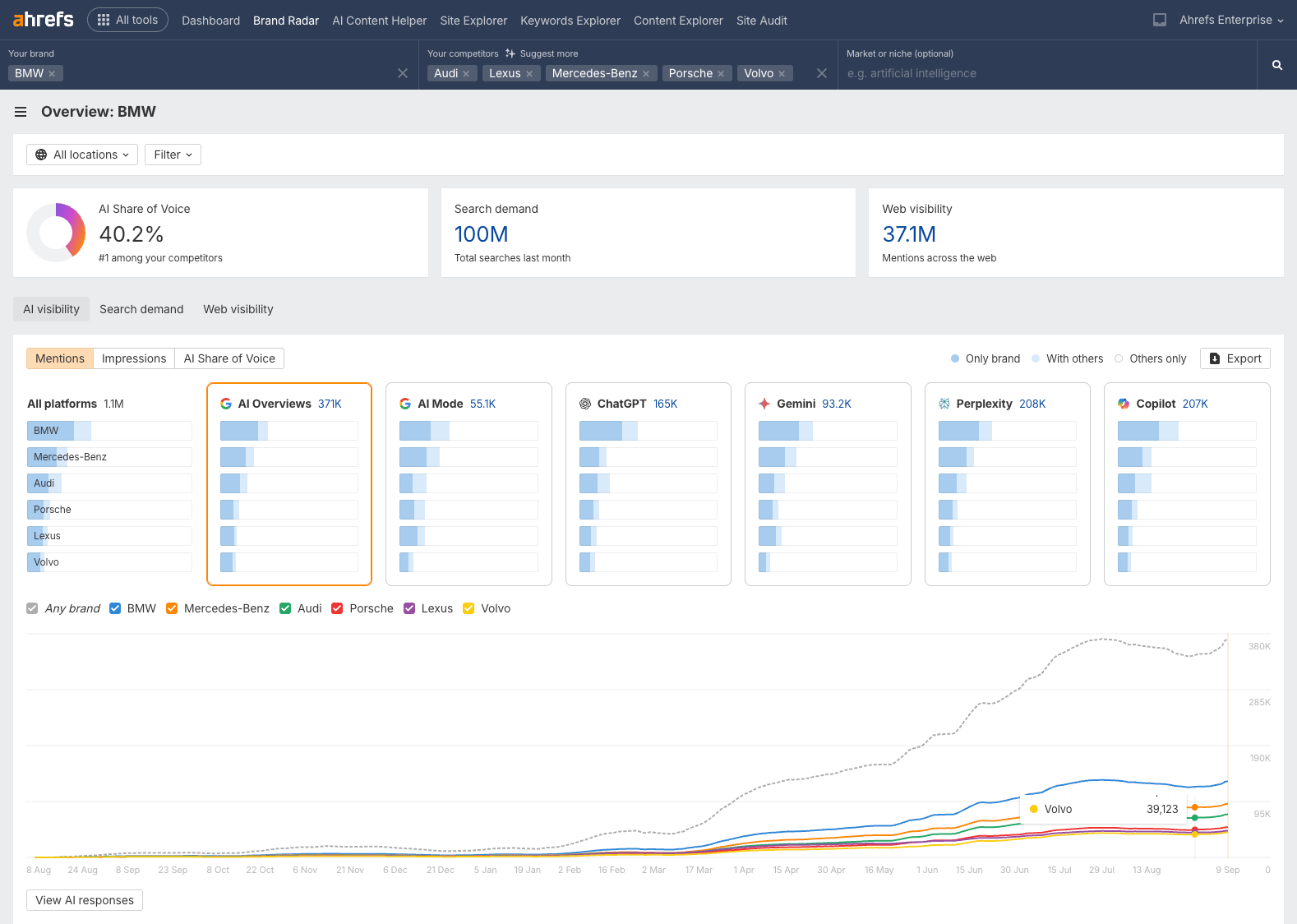
A major stumbling block when it comes to AI search tracking is that none of us know what people are actually searching en masse.
Unlike search engines, which publish keyword volumes, AI companies keep prompt logs private—that data never leaves their servers.
That makes prioritization tricky, and means it’s hard to know where to start when it comes to optimizing for AI visibility.
To move past this, we seed Brand Radar’s database with real search data: questions from our keyword database and People Also Ask queries, paired with search volume.
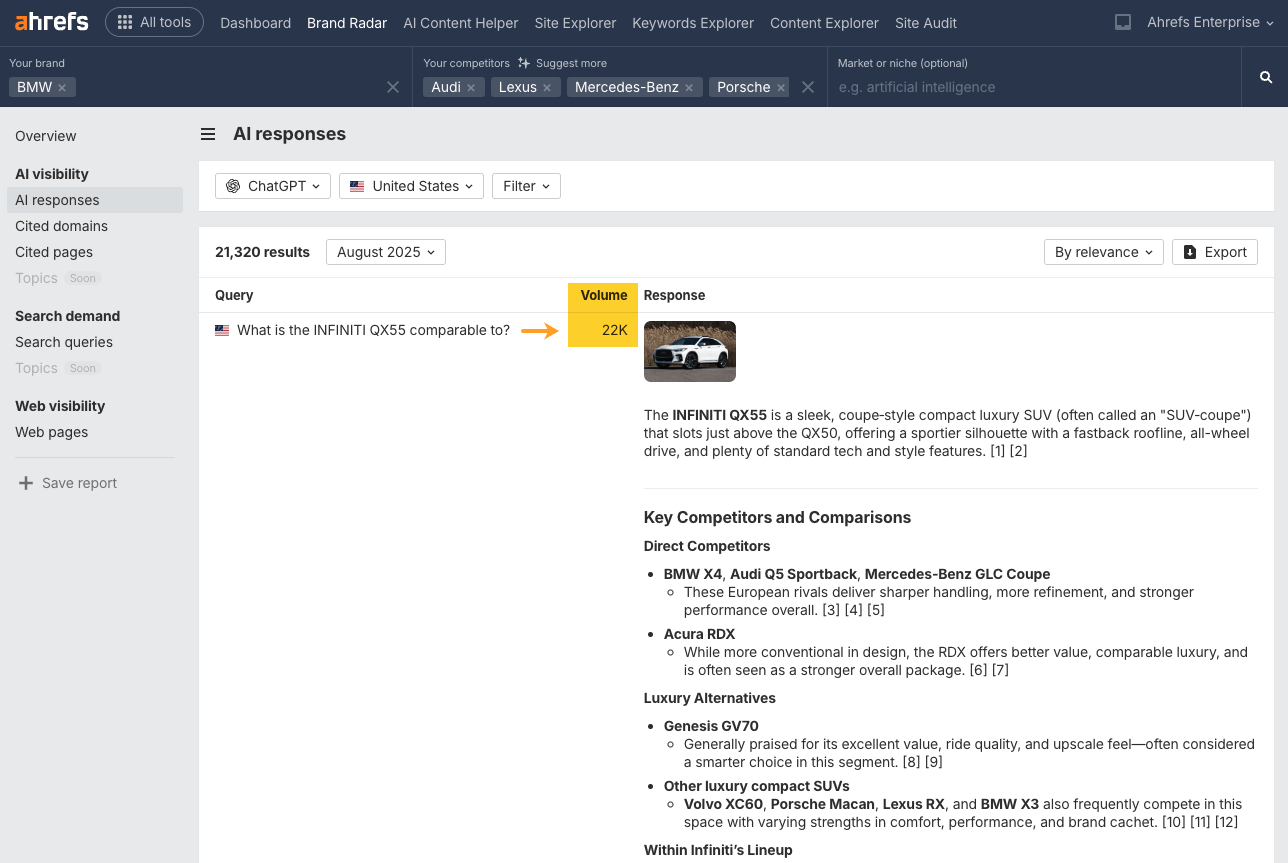
These are still “synthetic” prompts, but they reflect real world demand.
Our goal isn’t to tell you whether you appear for a single AI query, it’s to show you how visible your brand is across entire topics.
If you can see that you have great visibility for a topic, you don’t need to track hundreds of specific prompts within that topic, because you already understand the underlying probability that you’ll be mentioned.
By focusing on aggregated visibility, you can move past noisy outputs:
- See if AI consistently ties you to a category—not just if you appeared once.
- Track trends over time—not just snapshots.
- Learn how your brand is positioned against competitors—not just mentioned.
Think of AI tracking less like rank tracking and more like polling.
You don’t care about one answer, you care about the direction of the trend across a statistically significant amount of data.

May: Thousands of “Labubu” related search queries start showing up in the SERPs.
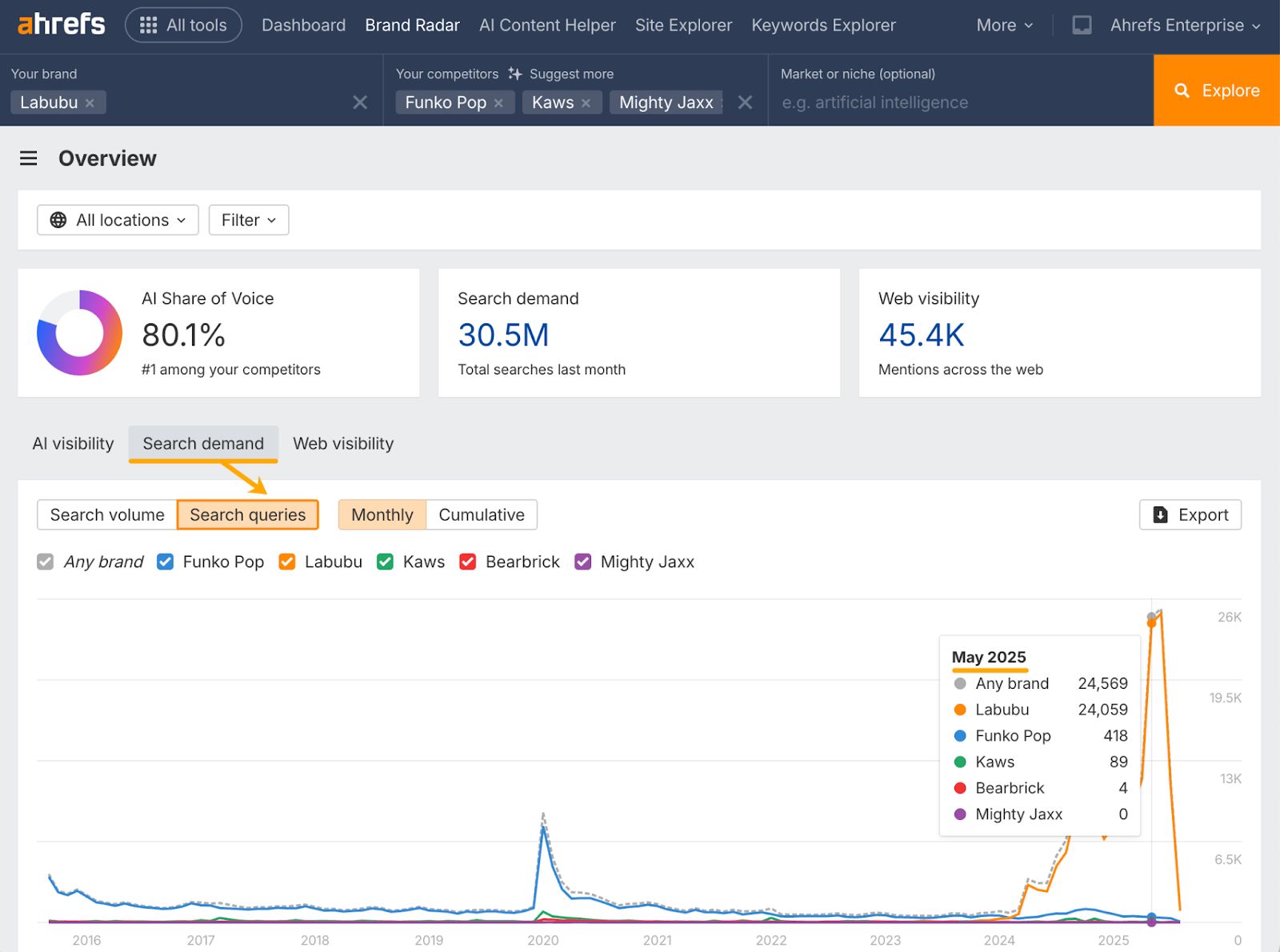
July: Search volume spikes for those same “Labubu” queries.
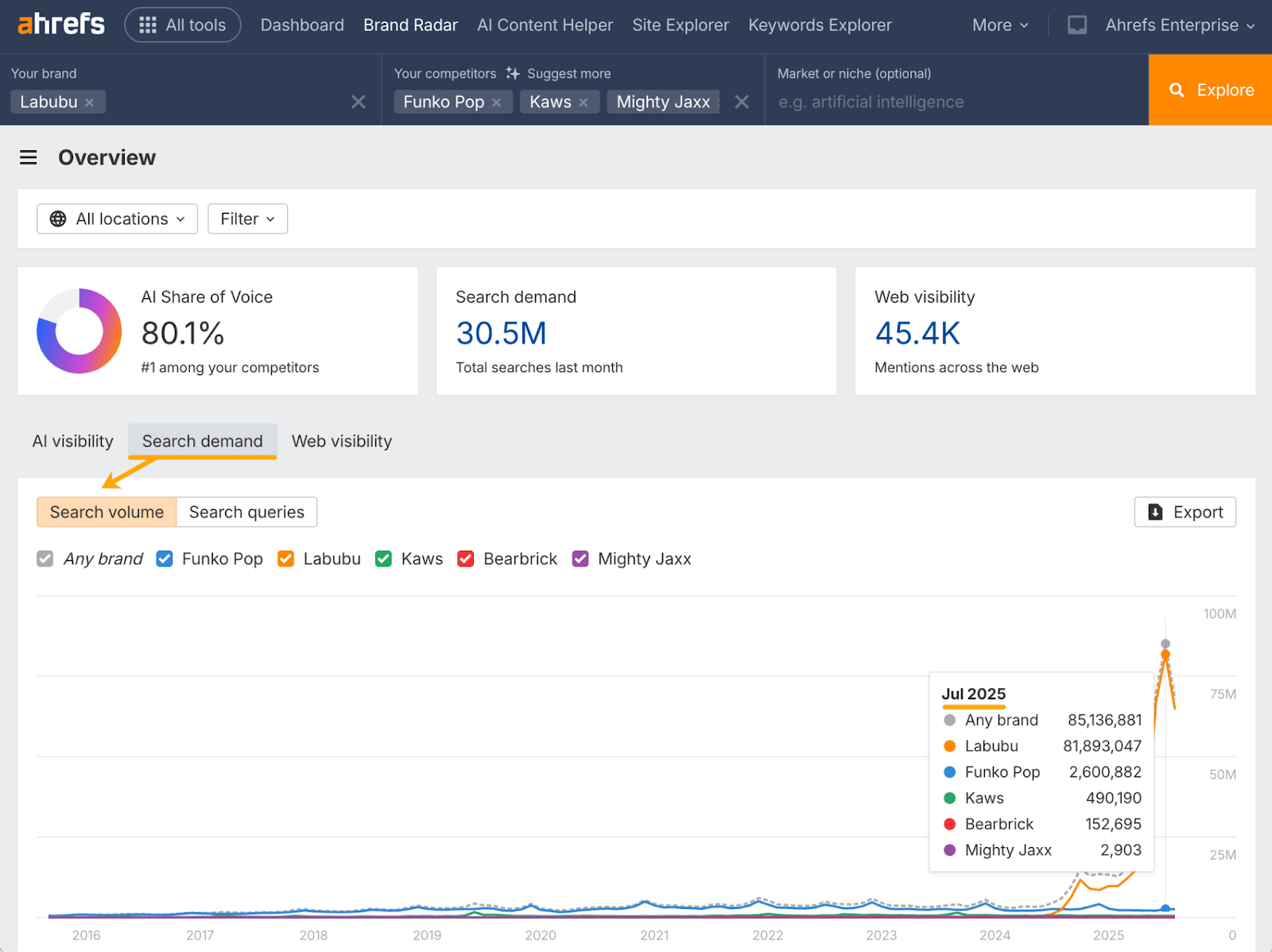
Also in July, web mentions for “Labubu” surge, overtaking market-leading toy Funko Pop.
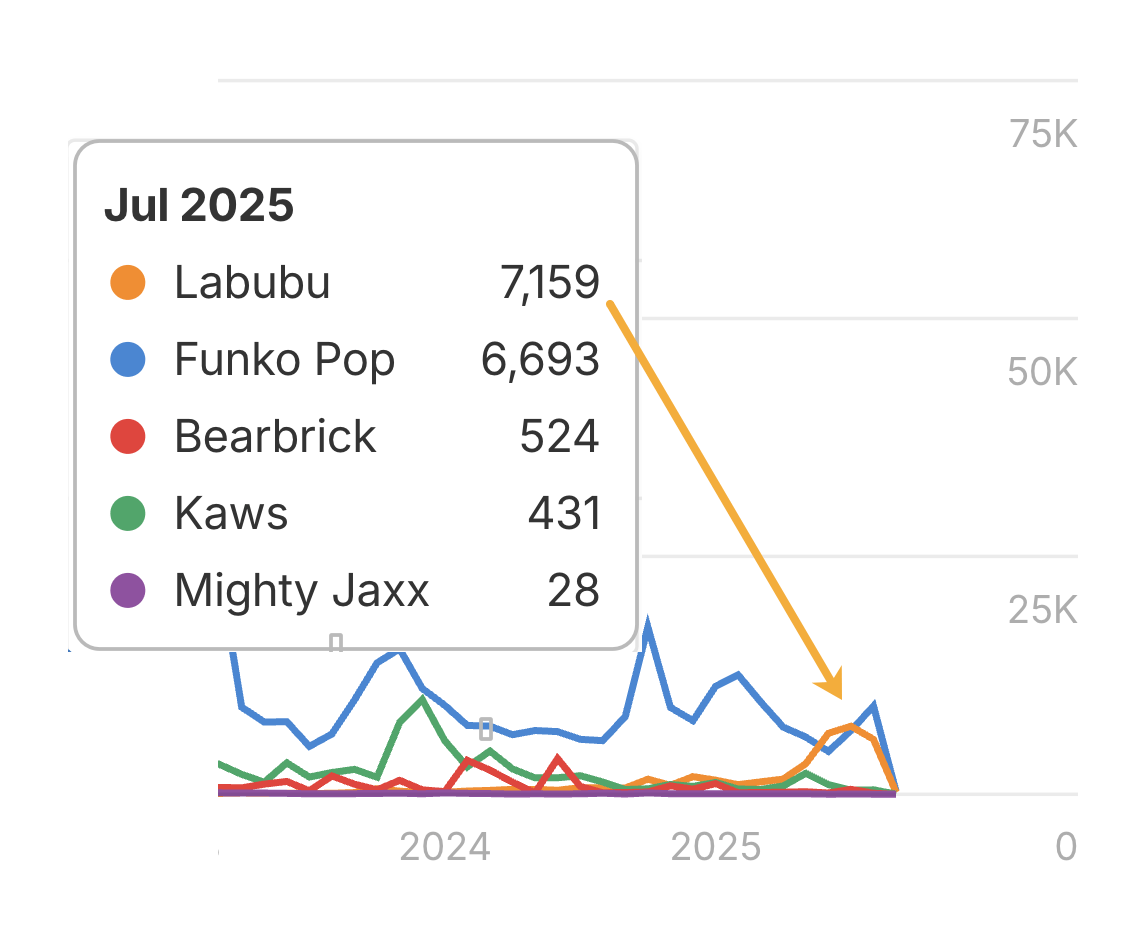
August: Labubu crosses over into AI visibility, gaining mentions in Google’s AI Overviews in late August—overtaking another leading toy brand: Kaws.
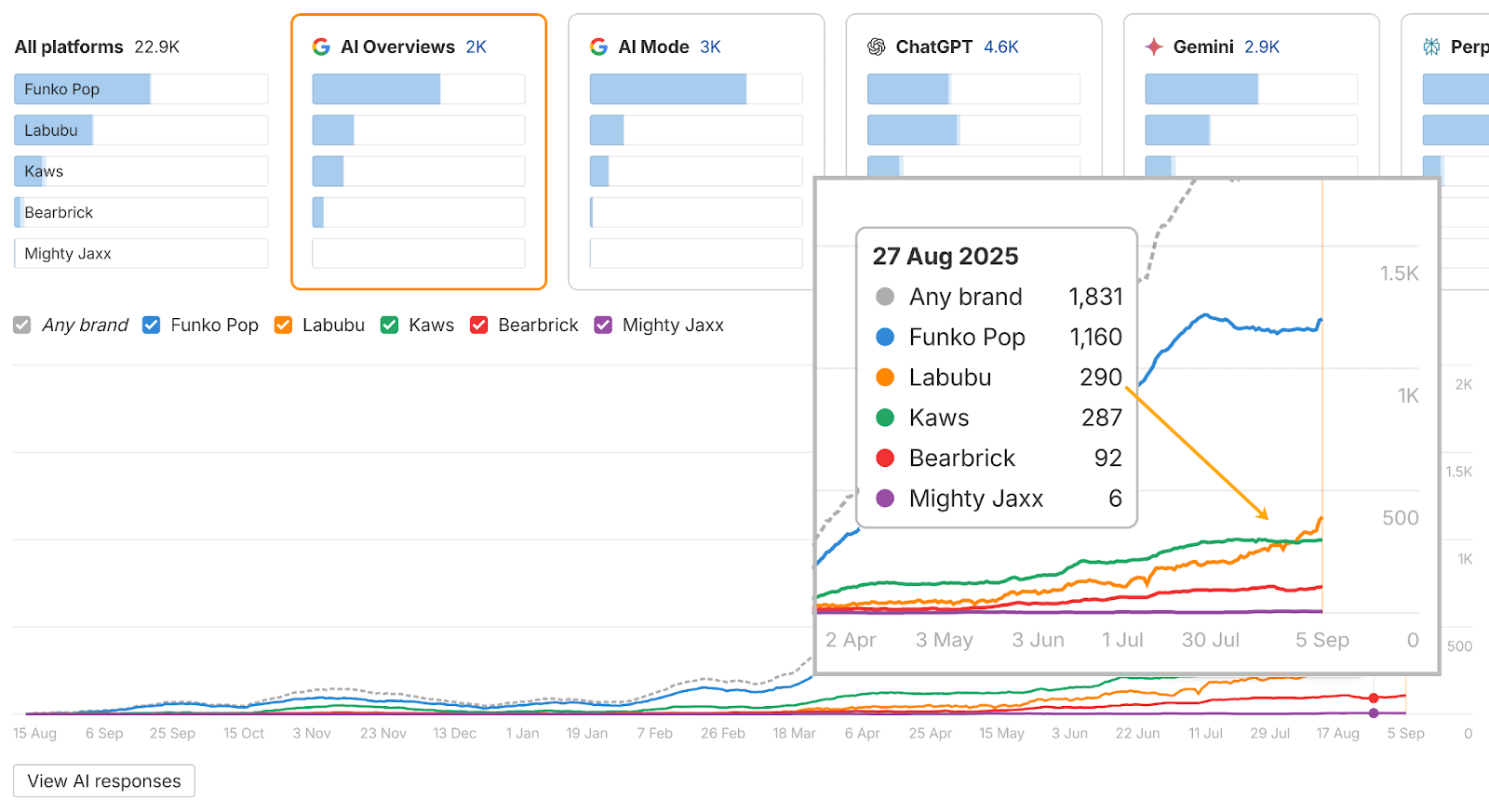
Also in August, Labubu overtakes all other competitors in ChatGPT conversations.
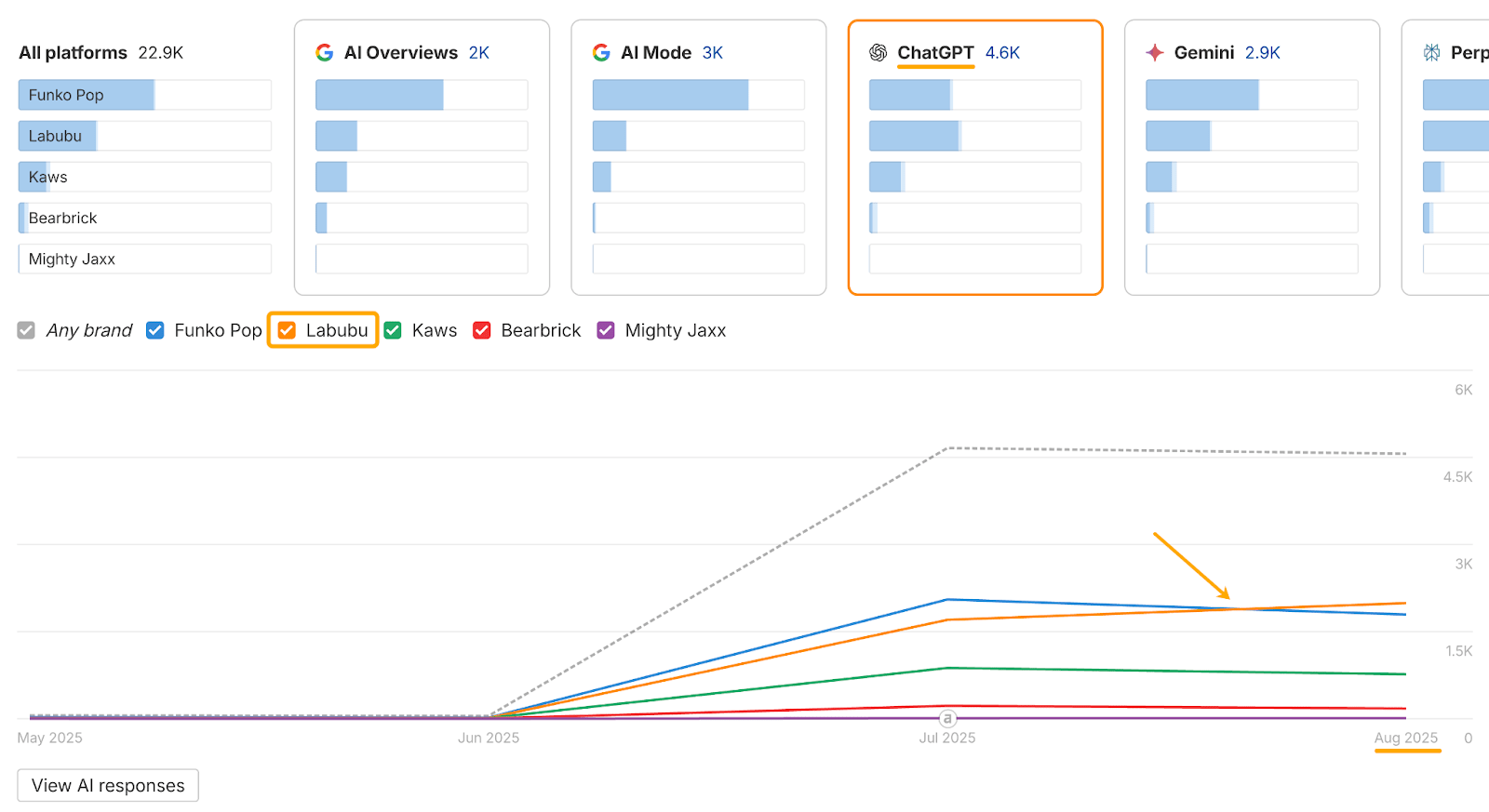
This example shows that AI is part of a wider discovery ecosystem.
By tracking it directionally, you can see when and how a brand (or trend) breaks through into AI.
In all, it took four months for the Labubu brand to surface in AI conversations.
By running the same analysis on competitors, you can evaluate different scenarios, replicate what works, and set realistic expectations for your own AI visibility timeline.
But, AI responses still describe us primarily as an ‘SEO’ or ‘Backlinks’ tool.
By putting out consistent AI features, products, content, and messaging, our positioning is now beginning to shift on some AI surfaces.
You can see this when the red trend line (AI) overtakes the green (Backlinks) in the chart below.
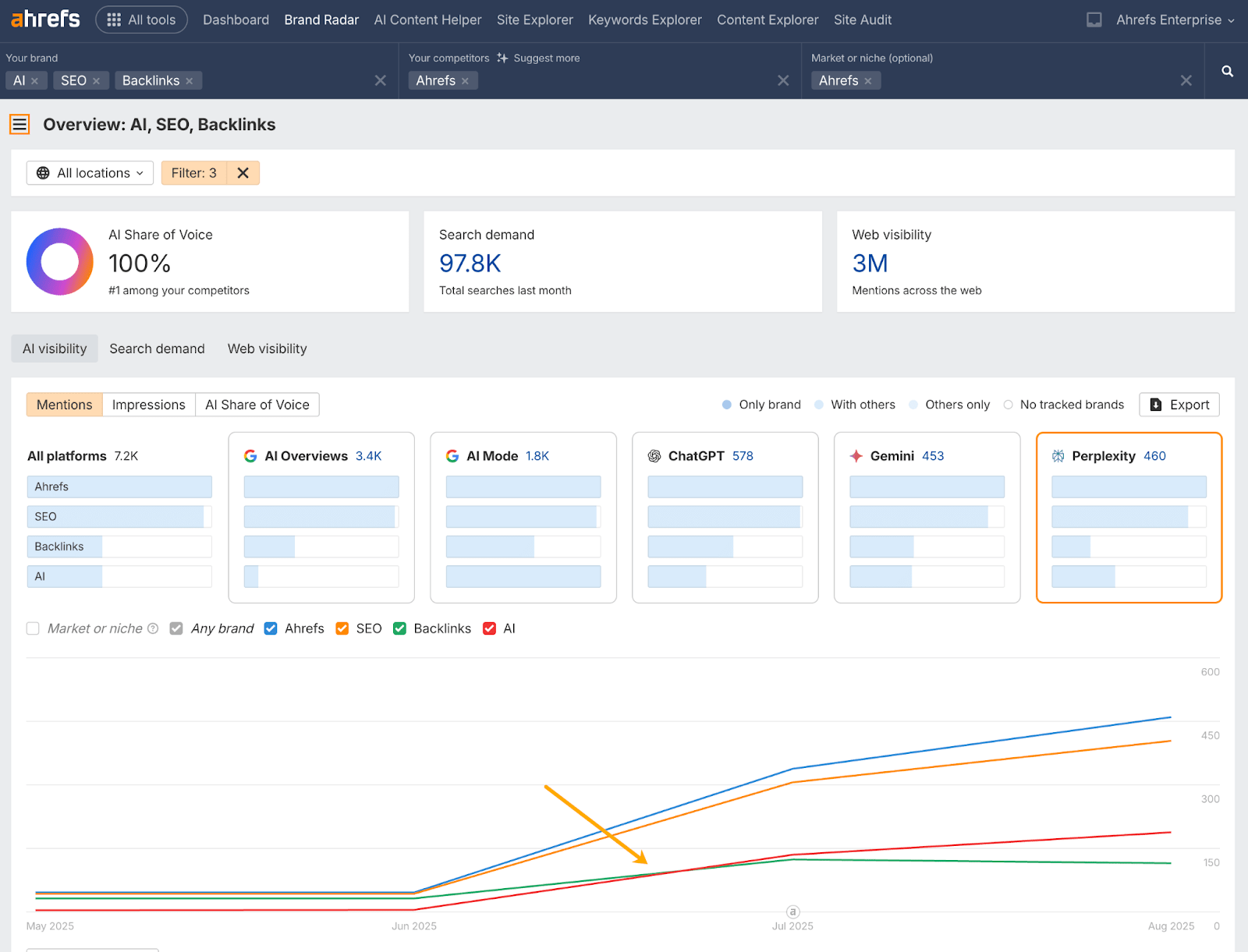
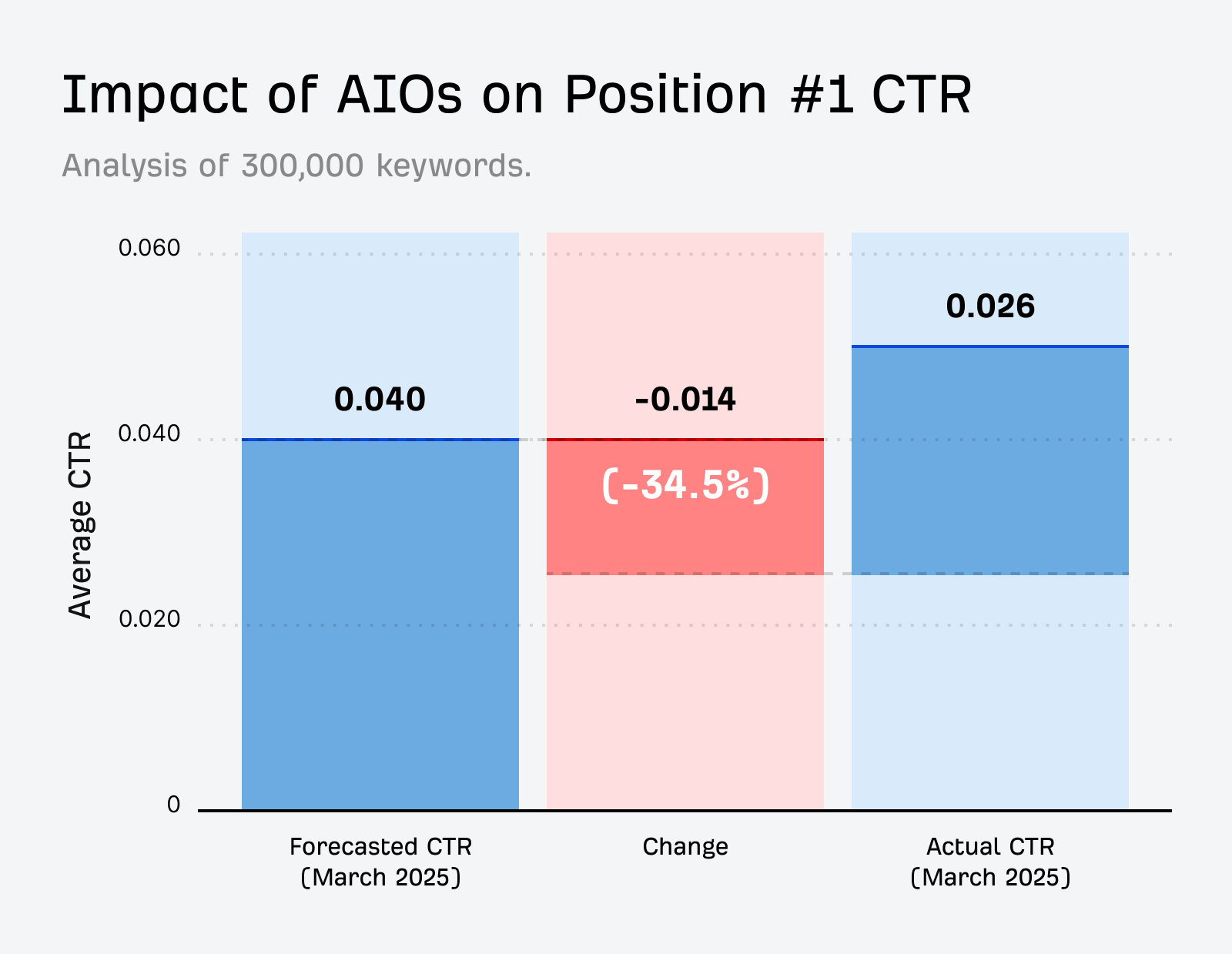
That means being named in AI answers is no longer optional.
AI assistants are already part of the discovery journey.
People turn to ChatGPT, Gemini, and Copilot for product recommendations, not just quick facts.
If your brand isn’t in those answers, you’re invisible at the exact moment decisions are made.
That’s why tracking AI visibility matters.
Even if the data is noisy, it shows whether you’re part of the conversation—or whether competitors are taking the spotlight.
In a perfect world, tracking AI visibility on a micro and macro level isn’t an either–or choice.
Micro tracking for high-stakes AI prompts
Micro tracking is about zooming in on the handful of queries that really matter to your business.
These might include:
- Branded prompts: e.g. “What is [Brand] known for?”
- Competitor comparisons: e.g. “[Brand] vs [Competitor]”
- Bottom-of-funnel purchase queries: e.g. “best [product] for [audience]”
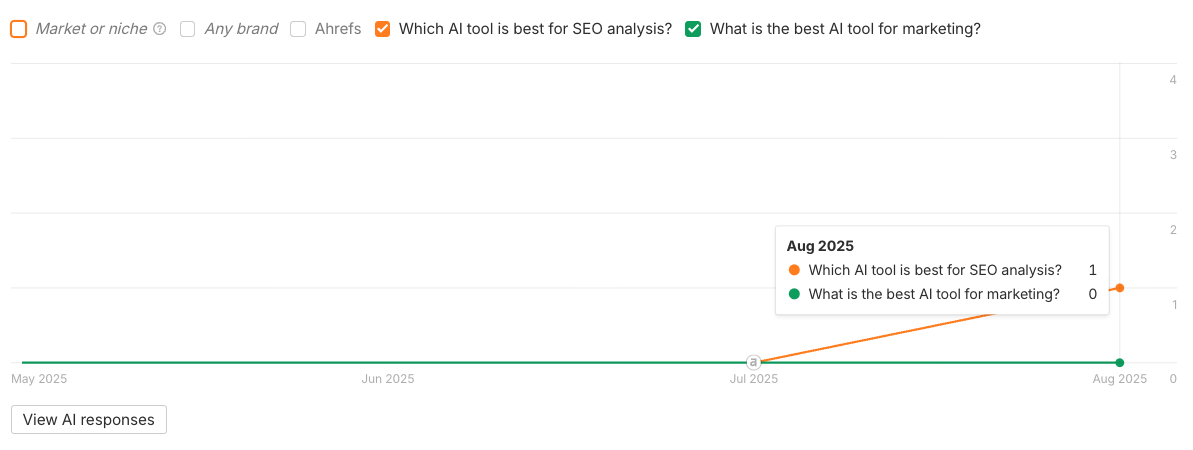
Even though AI responses are probabilistic, it’s still worth monitoring these “make or break” queries where visibility or accuracy really matters.
Macro tracking for overall AI visibility
Macro tracking is about zooming out to understand the bigger picture of how AI connects your brand to topics and markets.
This approach is about monitoring thousands of variations to spot patterns, find new opportunities, and map the competitive landscape.
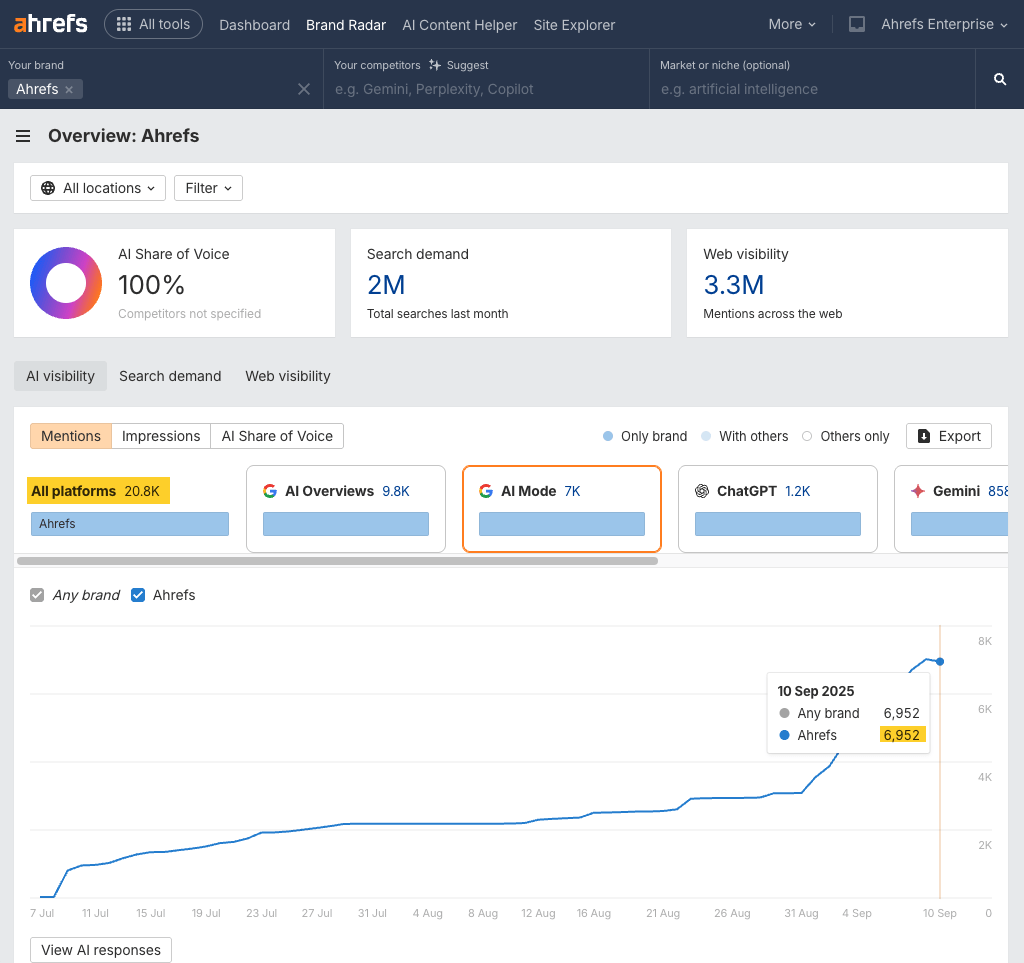
Most AI tools only handle the first mode, but Ahrefs’ Brand Radar can help you with both.
It lets you keep tabs on business-critical prompts while also surfacing the unknown unknowns.
And soon it’ll support custom prompts, so you can get even more granular with your tracking.
Looking at both levels helps you answer two questions: are you present where it counts, and are you strong enough to dominate the market?
Final thoughts
No, you’ll never track AI interactions in the same way you track traditional searches.
But that’s not the point.
AI search tracking is a compass—it will show if you’re headed in the right direction.
The real risk is ignoring your AI visibility while competitors build presence in the space.
Start now, treat the data as directional, and use it to shape your content, PR, and positioning.
Similar Posts
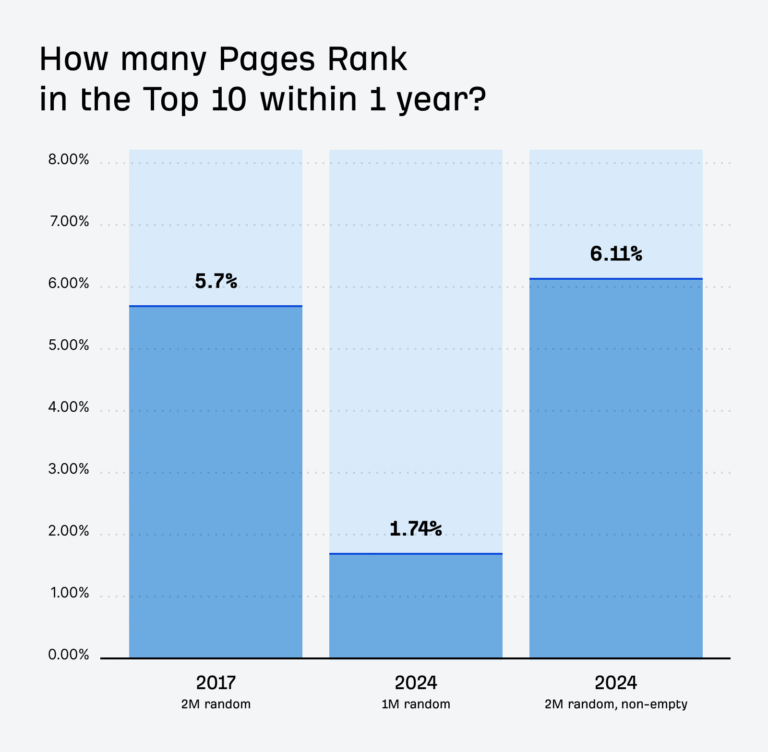
How Long Does It Take to Rank in Google? And How Old Are Top Ranking Pages?
Back in 2017, we conducted a study to answer a simple yet important question: How old are the top-ranking pages in Google? The results were eye-opening and became one of our most-referenced data studies. Clients and stakeholders often ask, “How long till my website (page) ranks on top of Google?” You could say “it depends”…
Release Day: Single Directory Components in Drupal
We’ve heard from many of you that you want to learn more about Single Directory Components (SDCs) in Drupal. Which makes sense, since they are one of the most exciting new features in Drupal theming since Twig was added to Drupal 8. We’re excited to share that the first phase of our brand-new SDC course…
What’s New in the Drupal CMS User Guide: June 2025 Update
Since the launch of the Drupal CMS earlier this year, we’ve been hard at work documenting everything you need to build and maintain a site using this new, streamlined Drupal experience. Our goal is to make the Drupal CMS User Guide a go-to reference for site builders of all experience levels — especially those coming…
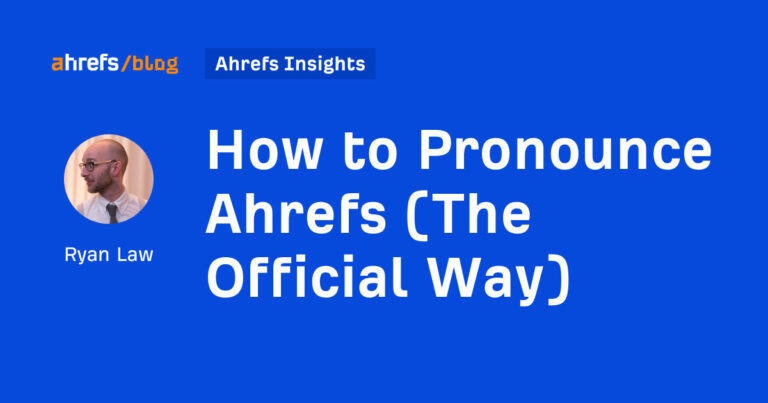
How to Pronounce Ahrefs (The Official Way)
Article Performance Data from Ahrefs Linking websites The number of websites linking to this post. Get the week’s best marketing content Life is full of huge, difficult questions. Are we alone in the universe? Why do movie characters never say “goodbye” before hanging up? And how do you pronounce Ahrefs? I can answer one of…
Pardon Our Dust: New Tutorial Organization and Navigation Roll-Out
TL;DR: Heads up! We’re rolling out a new organization structure of our tutorials, courses, and guides, so that we can implement our new guide navigation. You may find the course navigation change at any time within the next couple of weeks. Use the “Was This Helpful?” form at the bottom of any tutorial to reach…
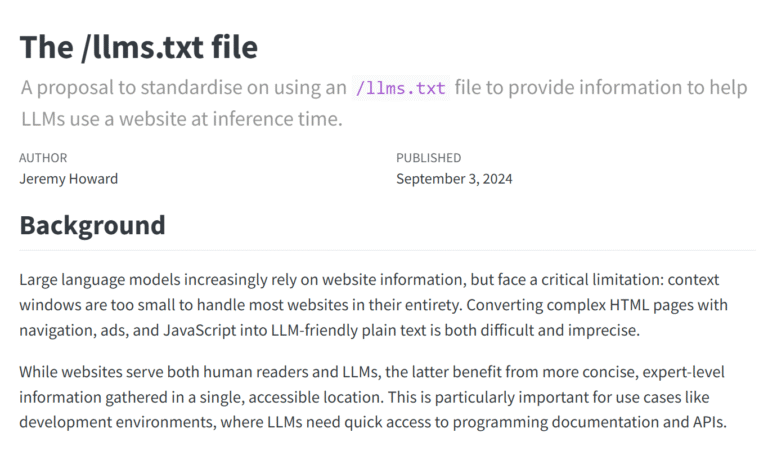
What Is llms.txt, and Should You Care About It?
Developers and marketers are being told to add llms.txt files to their sites to help large language models (LLMs) “understand” their content. But what exactly is llms.txt, who’s using it, and—more importantly—should you care? llmstext.org. In a nutshell, it’s a text file designed to tell LLMs where to find the good stuff: API documentation, return policies,…
